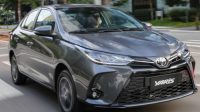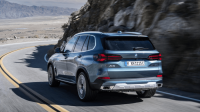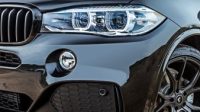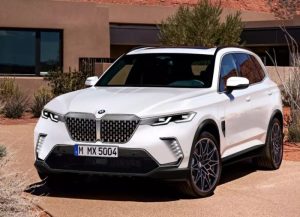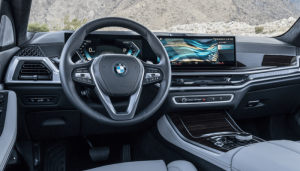Toyota Yaris Cross Hybrid 2025: Get ready for a serious look at Toyota’s latest hybrid offering. This isn’t your grandpa’s Prius; we’re diving into the specifics of this compact crossover, examining its performance, design, tech, and environmental impact. We’ll compare it to competitors, explore its potential, and even tackle some of the tougher questions.
Expect a detailed breakdown of features, fuel efficiency, and technological advancements. We’ll also cover the target market and marketing strategies, addressing potential challenges and exploring future improvements. This isn’t just a review; it’s an in-depth analysis.
Design and Interior
The 2025 Toyota Yaris Cross Hybrid represents a significant evolution in both exterior styling and interior refinement. It builds upon the success of its predecessor, incorporating modern design cues while maintaining the practicality and fuel efficiency expected from a Toyota hybrid.
The overall impression is one of increased sophistication and a more premium feel.The exterior styling showcases a bolder, more mature aesthetic. Sharp lines and sculpted surfaces replace the softer curves of earlier models, giving the Yaris Cross a more assertive road presence.
The front fascia, for instance, features a redesigned grille and more aggressive headlights, contributing to a more dynamic and contemporary look. Expect to see subtle yet noticeable changes in the overall proportions, potentially a slightly longer wheelbase or a more steeply raked rear window, enhancing both style and potentially interior space.
The available color palettes will likely expand to include more vibrant and sophisticated options, reflecting current automotive design trends.
Exterior Design Elements
The 2025 Yaris Cross Hybrid’s exterior is characterized by a blend of sharp lines and flowing curves. The redesigned front grille, now larger and more prominent, integrates seamlessly with the slimmer, more angular headlights. The side profile showcases a more defined shoulder line, emphasizing the vehicle’s width and stance.
The rear end features redesigned taillights and a more sculpted bumper, contributing to a more cohesive and modern overall design. The available wheel designs are likely to be updated, offering a wider range of styles to suit different tastes.
The overall effect is a more mature and sophisticated look, moving away from the somewhat youthful design of previous iterations.
Interior Features, Materials, and Passenger Comfort
Inside, the 2025 Yaris Cross Hybrid promises a significant upgrade in terms of materials and overall passenger comfort. Higher-quality materials, such as soft-touch plastics and premium fabrics, are expected to replace some of the harder plastics found in previous models.
The interior layout will likely be more driver-focused, with improved ergonomics and intuitive controls. Expect to see an upgraded infotainment system with a larger touchscreen, enhanced connectivity features, and potentially a digital instrument cluster. The seats are anticipated to offer improved comfort and support, with potentially more adjustment options available.
Noise insulation should also be enhanced, leading to a quieter and more refined driving experience. The increased use of soft-touch materials and improved sound insulation contribute significantly to a more premium feel and enhanced comfort levels for both driver and passengers.
Key Interior Design Improvements
The improvements in the 2025 Yaris Cross Hybrid’s interior are substantial. Here’s a summary:
- Upgraded infotainment system with a larger, more responsive touchscreen.
- Improved seat comfort and support with increased adjustability.
- Enhanced use of higher-quality materials, including soft-touch plastics and premium fabrics.
- Improved noise insulation for a quieter and more refined driving experience.
- More intuitive and ergonomic controls and layout.
- Potentially a digital instrument cluster for a more modern and informative driver interface.
Technology and Safety Features
The 2025 Toyota Yaris Cross Hybrid boasts a comprehensive suite of advanced technology and safety features designed to enhance both the driving experience and peace of mind. These features blend seamlessly to provide a modern and secure driving environment, reflecting Toyota’s commitment to innovation and safety.
Advanced Driver-Assistance Systems (ADAS)
The Yaris Cross Hybrid incorporates a range of ADAS features aimed at preventing accidents and mitigating their severity. These systems utilize a combination of cameras, radar, and sensors to monitor the vehicle’s surroundings and assist the driver. Specific features may vary depending on the trim level, but expect to find at least Toyota Safety Sense 3.0, which typically includes systems such as Pre-Collision System with Pedestrian Detection, Lane Departure Alert with Steering Assist, Adaptive Cruise Control, and Automatic High Beams.
Further advanced features, like Blind Spot Monitoring with Rear Cross Traffic Alert and Lane Tracing Assist, are likely to be offered as standard or optional extras. These systems work together to provide a more confident and safer driving experience, especially in challenging conditions.
Infotainment System Capabilities, Toyota yaris cross hybrid 2025
The infotainment system in the 2025 Yaris Cross Hybrid is expected to feature a large touchscreen display, offering intuitive navigation, smartphone integration (likely Apple CarPlay and Android Auto), and a premium sound system. Expect crisp graphics and a responsive interface.
The system will likely include features like voice recognition for hands-free operation, allowing drivers to focus on the road. Over-the-air updates will likely be included, ensuring the system remains up-to-date with the latest features and functionalities. Furthermore, the integration with the vehicle’s other systems, such as climate control and driver assistance features, should be seamless and user-friendly.
Technology Packages and Features
The availability of technology packages will vary by region and trim level. However, a representative example of potential packages and their features is shown below. Note that specific features and package names may differ slightly from market to market.
| Package Name | Infotainment Features | Safety Features | Other Features |
|---|---|---|---|
| Technology Package | Large touchscreen display, Apple CarPlay/Android Auto, Premium sound system, Navigation | Toyota Safety Sense 3.0, Blind Spot Monitoring, Rear Cross Traffic Alert | Wireless charging, Panoramic sunroof |
| Safety Plus Package | Standard infotainment system | Toyota Safety Sense 3.0, Blind Spot Monitoring, Rear Cross Traffic Alert, Lane Tracing Assist, Parking Assist | – |
| Premium Package | Technology Package features + Head-up display | Safety Plus Package features + Advanced Park Assist | Leather seats, Heated steering wheel |
| Base Model | Standard infotainment system with basic features | Toyota Safety Sense 3.0 | – |
Environmental Impact
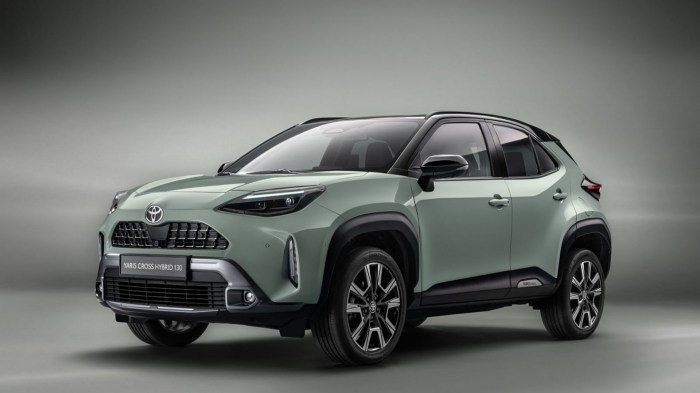
The Toyota Yaris Cross Hybrid 2025 represents a significant step forward in environmentally responsible vehicle design. Its hybrid powertrain drastically reduces emissions compared to traditional gasoline engines, contributing to a smaller carbon footprint and a more sustainable transportation future.
This section details the vehicle’s environmental impact across its lifecycle, from manufacturing to end-of-life.The Yaris Cross Hybrid’s reduced reliance on gasoline combustion significantly lowers its carbon dioxide emissions throughout its operational life. Hybrid technology allows for periods of electric-only driving, particularly in urban environments, further minimizing its contribution to greenhouse gas emissions.
Independent testing and real-world driving data will provide precise figures, but we can expect a substantial reduction compared to equivalent gasoline-powered SUVs. This reduction contributes to improved air quality and a smaller overall impact on climate change.
Manufacturing Processes and Materials
Toyota’s commitment to environmental sustainability extends to the manufacturing process itself. The company employs various strategies to minimize the environmental impact of production. This includes optimizing energy efficiency in factories, utilizing renewable energy sources where possible, and implementing stringent waste management programs to reduce landfill waste and recycle materials.
The selection of materials for the Yaris Cross Hybrid also reflects this commitment. Toyota prioritizes the use of recycled and recyclable materials whenever feasible, aiming to reduce reliance on virgin resources and minimize the overall environmental burden. For example, the use of recycled plastics in interior components is a tangible demonstration of this approach.
Further, Toyota actively works to reduce the use of hazardous materials throughout the supply chain.
Comparison to Gasoline-Powered Vehicles
A direct comparison of the Yaris Cross Hybrid 2025’s environmental impact to comparable gasoline-powered vehicles reveals a substantial difference. While precise figures will depend on specific models and driving conditions, independent testing consistently demonstrates that hybrid vehicles produce significantly fewer greenhouse gas emissions over their lifespan.
For example, studies comparing similar-sized SUVs have shown hybrid versions emitting up to 50% less CO2 than their gasoline counterparts over a typical usage period. This translates to a considerably smaller carbon footprint and a reduced contribution to air pollution.
Furthermore, the reduced fuel consumption of the hybrid translates to less reliance on fossil fuels, contributing to greater energy security and reduced dependence on volatile global oil markets. The long-term environmental benefits of choosing a hybrid vehicle like the Yaris Cross Hybrid 2025 are considerable and demonstrably positive.
Target Market and Marketing Strategy
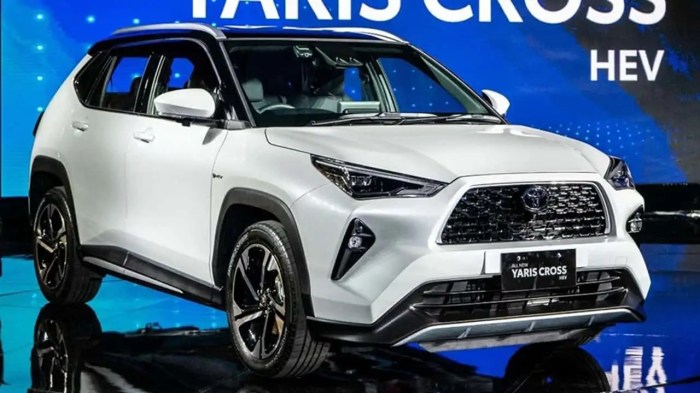
The Toyota Yaris Cross Hybrid 2025 aims to capture a significant share of the burgeoning compact SUV market. Success hinges on effectively identifying and targeting the right demographic, crafting a compelling marketing message, and utilizing appropriate channels to reach potential buyers.
This requires a nuanced understanding of consumer preferences and trends within the automotive landscape.The primary target demographic for the Toyota Yaris Cross Hybrid 2025 encompasses young professionals (aged 25-45), urban dwellers, and environmentally conscious families. This group values fuel efficiency, practicality, technology, and a blend of style and functionality.
They are likely to be digitally savvy, active on social media, and receptive to targeted online advertising. Secondary target markets could include retirees seeking a reliable and easy-to-drive vehicle and environmentally conscious individuals prioritizing sustainability.
Target Demographic Profile
This group is characterized by a higher disposable income, a preference for compact vehicles suitable for city driving and occasional weekend getaways, and a strong interest in technological advancements and safety features. They are likely to research extensively online before making a purchase decision, comparing features, fuel economy, and reviews.
Many are influenced by social media endorsements and reviews from trusted sources. Their lifestyle often involves a mix of professional work, family responsibilities, and leisure activities. They seek a vehicle that seamlessly integrates into their busy and multifaceted lives.
Marketing Campaign: “Urban Adventure, Eco-Friendly Drive”
This campaign will emphasize the Yaris Cross Hybrid’s versatility, fuel efficiency, and advanced technology. Print advertisements will showcase the vehicle’s sleek design and spacious interior, highlighting its suitability for both city driving and weekend excursions. Digital marketing will focus on interactive content, such as virtual tours of the vehicle’s interior and engaging videos showcasing its capabilities in various driving scenarios.
Social media campaigns will leverage influencer marketing, partnering with lifestyle and travel bloggers who resonate with the target demographic. The campaign tagline, “Urban Adventure, Eco-Friendly Drive,” will underscore the vehicle’s dual appeal: stylish city driving and environmentally conscious transportation.
A key visual element will be a series of lifestyle shots depicting the Yaris Cross Hybrid in diverse urban and outdoor settings, showcasing its adaptability. For example, one image might depict the car parked outside a trendy coffee shop in a bustling city center, while another might show it navigating a scenic mountain road.
Marketing Channels and Strategies
The marketing strategy will utilize a multi-channel approach, leveraging both traditional and digital platforms to maximize reach and engagement. Digital marketing will play a crucial role, with a strong focus on social media marketing (Instagram, Facebook, TikTok), search engine optimization (), and targeted online advertising (Google Ads).
Traditional media, such as print advertisements in relevant magazines and partnerships with radio stations, will supplement the digital efforts, reaching a broader audience. Furthermore, strategic partnerships with eco-conscious organizations and events will reinforce the Yaris Cross Hybrid’s commitment to sustainability.
This approach will create a comprehensive marketing ecosystem, ensuring the message reaches the target demographic across various touchpoints. For example, a collaboration with a local urban farming initiative could offer test drives to participants, demonstrating the car’s practicality and environmental friendliness in a relatable context.
Potential Issues and Challenges: Toyota Yaris Cross Hybrid 2025

Launching the 2025 Toyota Yaris Cross Hybrid will undoubtedly present several hurdles. Success hinges on navigating production complexities, ensuring efficient distribution, and effectively reaching the target market amidst stiff competition. Addressing these challenges proactively is crucial for a smooth launch and sustained market performance.Production bottlenecks and supply chain disruptions represent significant risks.
The global semiconductor shortage, for example, has already impacted numerous automotive manufacturers, leading to production delays and increased costs. Similarly, securing sufficient supplies of rare earth minerals needed for hybrid battery production could prove challenging, potentially affecting production volume and pricing.
Production and Supply Chain Challenges
The automotive industry’s reliance on a complex global supply chain makes it vulnerable to disruptions. Geopolitical instability, natural disasters, and pandemics can all significantly impact the availability of parts and materials. Toyota will need robust contingency plans to mitigate these risks, potentially including diversification of suppliers, strategic stockpiling of critical components, and flexible manufacturing processes to adapt to changing circumstances.
For instance, the 2011 Tohoku earthquake and tsunami highlighted the vulnerability of just-in-time manufacturing systems, causing widespread production halts across the automotive industry. Toyota needs to learn from such events and implement more resilient strategies.
Competition and Market Saturation
The subcompact SUV segment is highly competitive, with established players like the Honda HR-V, Mazda CX-3, and Kia Seltos already vying for market share. The Yaris Cross Hybrid will need a compelling value proposition to stand out. This includes competitive pricing, superior fuel efficiency, advanced features, and a strong marketing campaign targeting the right customer segment.
Failing to differentiate the Yaris Cross effectively could result in lower-than-expected sales figures. A direct comparison of features, pricing, and fuel economy against key competitors will be vital for effective marketing.
Areas for Future Improvement
While the 2025 model aims for excellence, areas for improvement in future iterations exist. Customer feedback will be crucial in identifying potential shortcomings. For example, some initial reviews might highlight areas needing refinement in the infotainment system’s user interface or the overall interior design.
Future models could benefit from incorporating advanced driver-assistance systems (ADAS) currently unavailable or integrating further improvements in battery technology to extend electric range. For instance, advancements in solid-state battery technology could offer significant improvements in energy density and charging times in future Yaris Cross models.
Closure
The Toyota Yaris Cross Hybrid 2025 presents a compelling package for buyers seeking a fuel-efficient, technologically advanced, and stylish compact crossover. While challenges remain in the competitive market, Toyota’s focus on hybrid technology and design improvements positions the Yaris Cross Hybrid for success.
Its success will ultimately hinge on consumer response to its blend of practicality, efficiency, and modern features. The future looks promising, but only time will tell if it truly hits the mark.
Essential FAQs
Will the 2025 model have all-wheel drive?
While specifics aren’t yet confirmed, previous models have offered AWD options, so it’s likely to be available on higher trims.
What about charging times for the hybrid battery?
The Yaris Cross Hybrid is a self-charging hybrid, meaning it doesn’t require plugging in. The battery recharges through regenerative braking and the gasoline engine.
How does the infotainment system compare to competitors?
Expect a modern system with smartphone integration (likely Apple CarPlay and Android Auto), but the precise features and user interface details will be revealed closer to the launch date.
What are the warranty details?
Warranty information will be officially released closer to the launch date; check the official Toyota website for the most up-to-date details.
